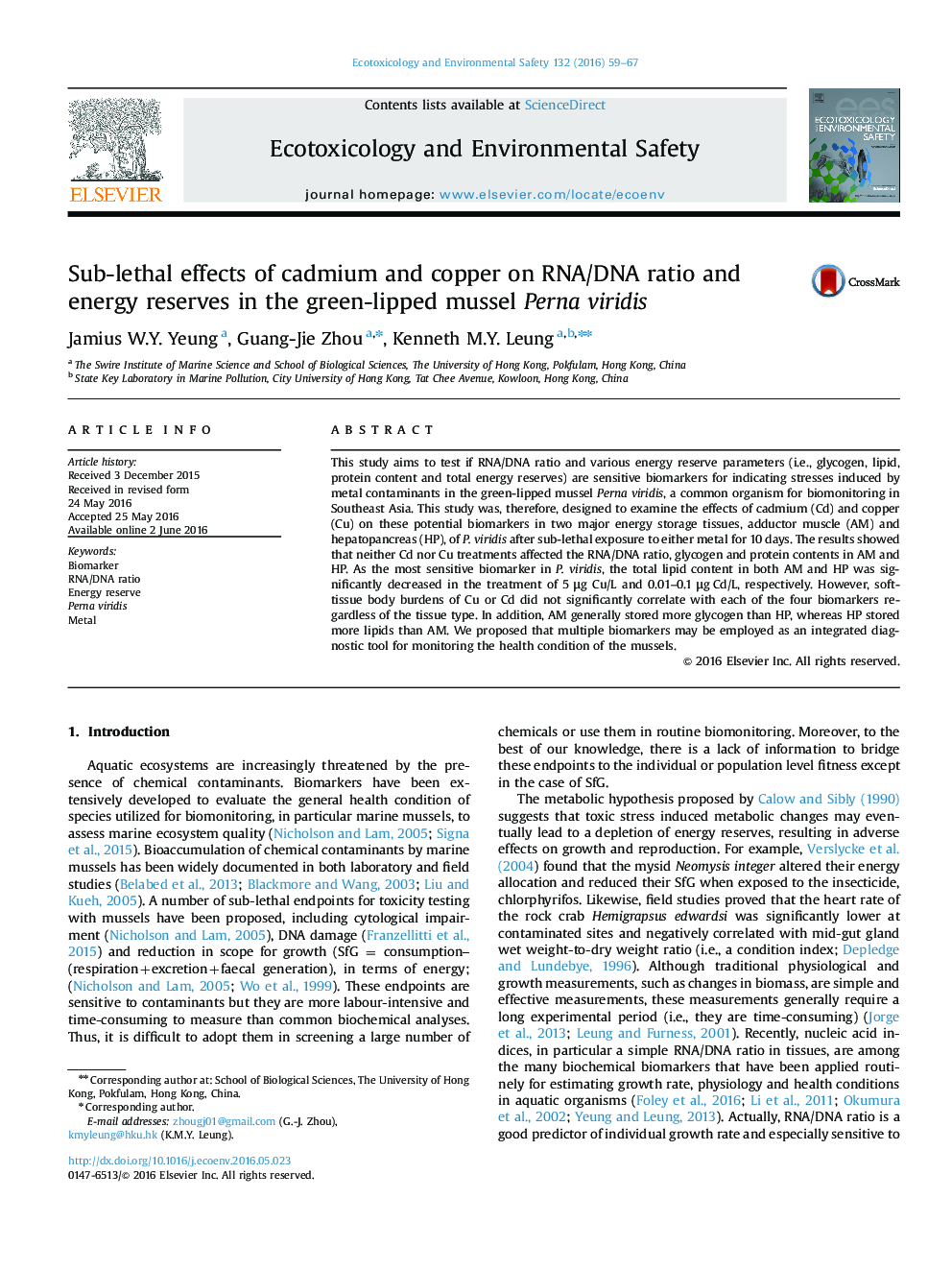| Article ID | Journal | Published Year | Pages | File Type |
|---|---|---|---|---|
| 4419072 | Ecotoxicology and Environmental Safety | 2016 | 9 Pages |
•Sub-lethal effects of cadmium and copper on P. viridis were examined.•Biological responses like RNA/DNA ratio and energy reserves were tissue specific.•Total lipid content was the most sensitive potential biomarker in P. viridis.
This study aims to test if RNA/DNA ratio and various energy reserve parameters (i.e., glycogen, lipid, protein content and total energy reserves) are sensitive biomarkers for indicating stresses induced by metal contaminants in the green-lipped mussel Perna viridis, a common organism for biomonitoring in Southeast Asia. This study was, therefore, designed to examine the effects of cadmium (Cd) and copper (Cu) on these potential biomarkers in two major energy storage tissues, adductor muscle (AM) and hepatopancreas (HP), of P. viridis after sub-lethal exposure to either metal for 10 days. The results showed that neither Cd nor Cu treatments affected the RNA/DNA ratio, glycogen and protein contents in AM and HP. As the most sensitive biomarker in P. viridis, the total lipid content in both AM and HP was significantly decreased in the treatment of 5 μg Cu/L and 0.01–0.1 μg Cd/L, respectively. However, soft-tissue body burdens of Cu or Cd did not significantly correlate with each of the four biomarkers regardless of the tissue type. In addition, AM generally stored more glycogen than HP, whereas HP stored more lipids than AM. We proposed that multiple biomarkers may be employed as an integrated diagnostic tool for monitoring the health condition of the mussels.
